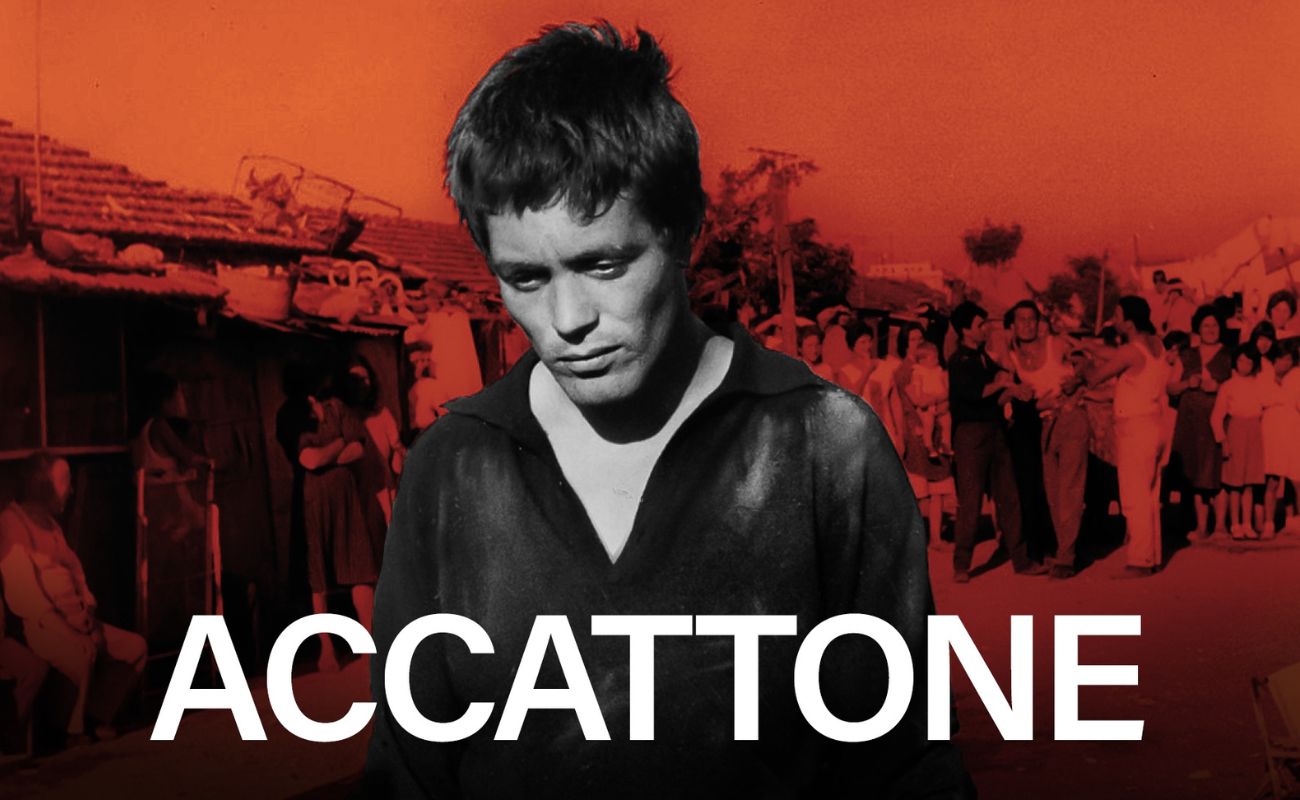
Accattone is a seminal Italian neorealist film directed by Pier Paolo Pasolini. Released in 1961, the movie marked Pasolini’s directorial debut and instantly established him as a force to be reckoned with in the world of cinema. Accattone, which translates to “beggar” or “scrounger” in English, delves into the gritty and harsh realities of post-war Rome and the lives of those living on the fringes of society.
In this article, we will explore 38 fascinating facts about this groundbreaking film, from its controversial production to its enduring impact on the cinematic landscape. Whether you’re a cinephile, an admirer of Italian cinema, or simply curious about the origins of neorealism, these facts are bound to shed light on the multifaceted nature of Accattone and its significance in the realm of filmmaking.
Key Takeaways:
- “Accattone” is a classic Italian film directed by Pier Paolo Pasolini, portraying the gritty reality of poverty in Rome’s slums with non-professional actors and a powerful narrative.
- “Accattone” challenges societal norms, shedding light on the lives of the marginalized, and offers a raw and unflinching portrayal of poverty, making it a timeless masterpiece in Italian cinema.
Accattone was directed by Pier Paolo Pasolini.
Accattone, released in 1961, was the directorial debut of Italian filmmaker Pier Paolo Pasolini.
The movie is set in the slums of Rome.
Accattone takes place in the impoverished neighborhoods of Rome, offering a gritty and realistic depiction of the city’s underworld.
Accattone was influenced by neorealism.
Pasolini drew inspiration from the neorealist movement, which focused on portraying the lives of ordinary people in a realistic and socially conscious manner.
Franco Citti plays the lead role of Vittorio “Accattone” Cataldi.
Accattone features the brilliant performance of Franco Citti in the role of Accattone, a pimp struggling to make a living in the destitute neighborhood.
The movie explores themes of poverty and survival.
Accattone delves deep into the harsh realities of poverty and the lengths people will go to survive in such challenging circumstances.
Pasolini wrote the screenplay for Accattone.
Pasolini not only directed the film but also penned the screenplay, showcasing his talents as a writer.
The movie was a departure from Pasolini’s early poetic style.
Accattone marked a shift in Pasolini’s filmmaking style, as he moved away from his earlier poetic and experimental work towards a more narrative-driven approach.
Accattone was received positively by critics.
Despite its gritty and realistic portrayal of poverty, Accattone was well-received by critics who praised its authenticity and social commentary.
The film explores the complex dynamics of love and exploitation.
Accattone delves into the intricate relationships between the characters, highlighting the delicate balance between love and exploitation in their lives.
The movie features non-professional actors from the slums of Rome.
In an effort to maintain the authenticity of the story, Pasolini cast non-professional actors from the slums of Rome, adding an extra layer of realism to the film.
Accattone was Pasolini’s breakthrough film.
Accattone marked a turning point in Pasolini’s career, propelling him into the international spotlight and establishing him as a prominent figure in Italian cinema.
The movie’s score was composed by Carlo Rustichelli.
Carlo Rustichelli composed the evocative score for Accattone, enhancing the emotional intensity of the film.
Accattone was Pasolini’s first feature-length film.
Prior to Accattone, Pasolini had primarily directed short films and documentaries, making this his first foray into full-length feature filmmaking.
Accattone is considered a classic of Italian cinema.
The impact and significance of Accattone in Italian cinema cannot be overstated, as it continues to be lauded as a classic work of art.
Accattone was influenced by Pasolini’s own experiences.
Just like many of Pasolini’s films, Accattone drew inspiration from the director’s personal experiences and observations of the world around him.
The film offers a raw and unflinching portrayal of poverty.
Accattone does not shy away from depicting the harsh realities of poverty, showcasing the struggles and hardships faced by its characters.
Accattone’s dialogue is primarily in Romanesco dialect.
The film captures the essence of the Roman working-class through its use of the Romanesco dialect, further emphasizing the authenticity of the story.
The movie explores the themes of redemption and hope.
Despite its gritty nature, Accattone also delves into the notions of redemption and hope, offering glimpses of light within the darkness.
Accattone is part of Pasolini’s “Trilogy of Life.”
Accattone is the first film in Pasolini’s “Trilogy of Life,” which also includes Mamma Roma and The Gospel According to St. Matthew.
The movie tackles issues of morality and social decay.
Accattone delves into the moral implications of its characters’ actions and highlights the decay of society in the face of poverty and desperation.
Accattone has a documentary-like quality.
Pasolini’s neorealist influence is evident in Accattone, giving the film a documentary-like quality that further immerses the audience in its world.
The film’s title translates to “Beggar” or “Scrounger” in English.
The title “Accattone” is derived from the Italian word meaning “Beggar” or “Scrounger,” aptly reflecting the film’s central themes.
Accattone marked the beginning of Pasolini’s collaboration with cinematographer Tonino Delli Colli.
Accattone marks the first collaboration between Pasolini and acclaimed cinematographer Tonino Delli Colli, who would go on to work on several of Pasolini’s subsequent films.
The movie was Pasolini’s response to the economic boom in Italy.
Accattone can be seen as Pasolini’s reaction to the economic disparities and social issues that accompanied the rapid economic growth of post-war Italy.
Accattone faced censorship and controversy upon its release.
Due to its portrayal of poverty and explicit content, Accattone faced censorship and encountered controversy upon its initial release.
Pasolini wanted to challenge societal norms with Accattone.
Accattone was intended to challenge conventional societal norms and shed light on the often overlooked lives of the marginalized.
Accattone features Pasolini’s distinct visual style.
Pasolini’s unique visual style, characterized by his masterful use of composition and symbolism, is evident throughout Accattone.
The film addresses the degradation of humanity in the face of poverty.
Accattone explores the dehumanizing effects of poverty, shedding light on how individuals can be reduced to their most primal instincts when faced with extreme circumstances.
Accattone was praised for its realistic portrayal of urban decay.
One of the standout aspects of Accattone is its ability to capture the stark reality of urban decay, leaving a lasting impact on the audience.
The movie’s groundbreaking approach influenced future filmmakers.
Accattone’s innovative storytelling and raw depiction of poverty have served as an inspiration for numerous filmmakers in the years that followed its release.
The character of Stella is played by Silvana Corsini.
Silvana Corsini delivers a captivating performance as Stella, a young woman caught up in the harsh world of Accattone.
Pasolini himself has a brief cameo in the film.
In a blink-and-you’ll-miss-it moment, Pasolini makes a cameo appearance in Accattone, further showcasing his dedication to the project.
Accattone’s narrative unfolds in a nonlinear manner.
The film’s non-linear narrative adds an element of intrigue to Accattone, immersing the viewer into the lives of its characters.
Accattone is a powerful critique of a society divided by class.
At its core, Accattone is a scathing critique of a society plagued by socioeconomic divisions and a lack of compassion for the less fortunate.
The movie is deeply rooted in Italian cultural and social context.
Accattone offers a profound exploration of the Italian cultural and social landscape, providing valuable insights into the country’s history and identity.
Accattone is acclaimed for its realistic depiction of street life.
The film’s meticulous attention to detail and authentic portrayal of street life contribute to its reputation as a seminal work in Italian cinema.
Accattone was made on a shoestring budget.
Despite its financial constraints, Accattone’s artistic merit shines through, proving that creativity and vision can overcome any limitations.
Accattone is a timeless masterpiece.
Accattone’s enduring legacy is a testament to the film’s powerful storytelling, social relevance, and Pasolini’s unmatched artistic vision.
Conclusion
Accattone is a critically acclaimed Italian film that has left a lasting impact on the world of cinema. With its raw and gritty depiction of the Roman underworld, the movie offers a deep and thought-provoking exploration of poverty, desperation, and moral ambiguity.Directed by Pier Paolo Pasolini, Accattone showcases the director’s signature neorealistic style and his ability to capture the authentic essence of the characters and their surroundings. The film not only serves as a powerful social commentary but also as a visual masterpiece, highlighting the stark contrast between the rich and the destitute.With its compelling story, impressive performances, and timeless themes, Accattone continues to be celebrated by film enthusiasts and critics alike. If you are a fan of Italian cinema or interested in movies that delve into the human condition, Accattone is a must-watch.
FAQs
1. Who is the director of Accattone?
Pier Paolo Pasolini is the director of Accattone. He is also known for his other acclaimed works such as “The Gospel According to Matthew” and “Salo, or the 120 Days of Sodom.”
2. What is the genre of Accattone?
Accattone falls under the genre of neorealism. It portrays the harsh realities of life, focusing on the lives of those living in poverty and the struggle for survival.
3. When was Accattone released?
The film was released in 1961.
4. Is Accattone based on a true story?
While Accattone is not based on a specific true story, it draws inspiration from the real lives of those living in poverty in the outskirts of Rome during that time.
5. Can you recommend similar movies to Accattone?
If you enjoyed Accattone, you might also like “Bicycle Thieves” (1948) and “La Strada” (1954), which explore similar themes of poverty and the human condition.
Was this page helpful?
Our commitment to delivering trustworthy and engaging content is at the heart of what we do. Each fact on our site is contributed by real users like you, bringing a wealth of diverse insights and information. To ensure the highest standards of accuracy and reliability, our dedicated editors meticulously review each submission. This process guarantees that the facts we share are not only fascinating but also credible. Trust in our commitment to quality and authenticity as you explore and learn with us.


